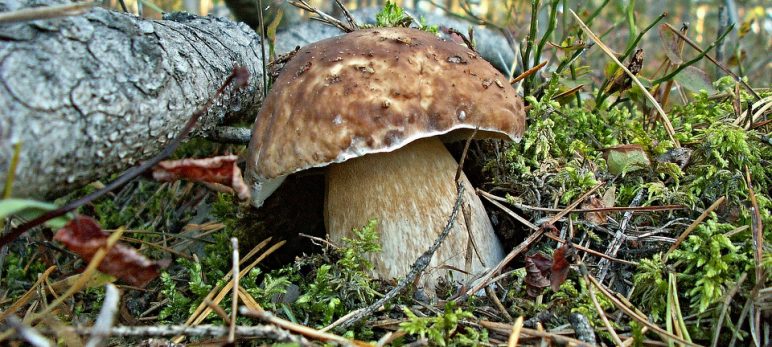Edible mushrooms are treated as a garnish or delicacy which can be taken regularly as part of the human diet, healthy food or as functional food. Mushrooms can be a supplement to the human diet not as regular food, but for the enhancement of health and fitness and thus can be classified into the category of dietary supplements/mushroom nutriceuticals.
Global assessment of wild edible fungi indicate the existence of 2327 useful wild species, 2166 edible with 1069 being used as food and 470 medicinal species, while thousands others are toxic and poisonous.
Traditionally, the ethno-mycological knowledge of edible mushrooms is limited to their visible fruit bodies. Morphological identification is based on features such as cap color, cap shape, stipe color and shape, gills size and color of fruiting bodies which within a species can vary greatly depending on the environmental conditions, which often lead to errors in the determination of their species. Another method to identify a mushroom species is a chemical test.
Chemical Tests
1. You must test for chemical reaction only fresh mushrooms.
2. The most useful tests are Melzer’s reagent and potassium hydroxide. Also, household ammonia can be used.
Ammonia (NH4OH, Ammonium Hydroxide)
Common household ammonia, available in any grocery store, works perfectly well. Ammonia is primarily used in the identification of boletes. Place a drop of ammonia on a fresh bolete’s cap, stem, sliced flesh, and pore surface. Note any color changes that take place. Some species, like Boletus illudens, will demonstrate a quick flash of one color (for example, blue-green), then settle into another, more permanent color change (for example, grayish). Other species, like Boletus separans, may demonstrate a single color change.
KOH (Potassium Hydroxide)
A 3 to 10 percent aqueous solution is used to test for color changes. This chemical is available from online retailers. KOH is used in the identification of many mushrooms, including boletes, polypores, and gilled mushrooms. For boletes, place a drop of KOH on the cap, stem, sliced flesh, and pore surface. For polypores, apply the KOH to the flesh and the cap surface. For gilled mushrooms, place a drop on the cap surface. Note any color changes that take place. A change to yellow is sometimes found in species of Agaricus and Amanita; magenta or olive reactions can help identify species of Russula and Lactarius; deep red or black reactions can help sort out many gilled mushrooms; black reactions among polypores are crucial separators; and various colors are produced with boletes. Don’t forget that a “negative” reaction (no color change) may also be an informative character!
Iron Salts (FeSO4)
A 10 percent aqueous solution is used to test for color changes. FeSO4 is available from online retailers. It is used primarily in the identification of boletes and russulas. For boletes, place a drop on the cap, stem, sliced flesh, and pore surface; for russulas, place a drop on the stem surface.
Example of Boletus edulis: cap surface stains orange with the application of KOH or NH4OH.
Sources:
Edible and Non-Edible Wild Mushrooms: Nutrition, Toxicity and Strategies for Recognition
The Numbers Behind Mushroom Biodiversity
Chemical test in mushroom identification
Collecting Mushrooms for Study
Mushrooms of Cape Cod and the National Seashore
Natural experiments: chemistry with mushrooms
Check out the *NEW* Mushring Probability Model (MPM) forecast maps for wild mushrooms fruiting



